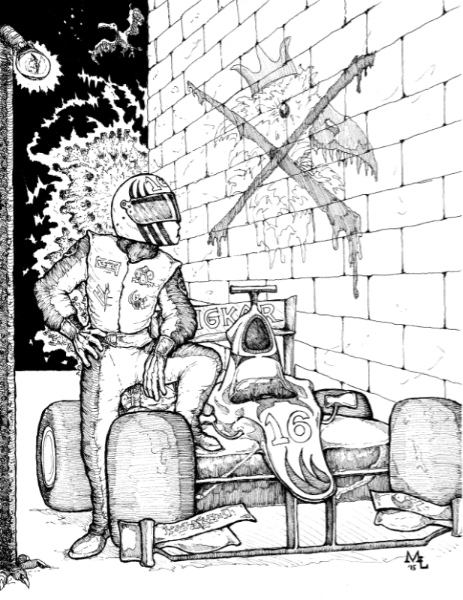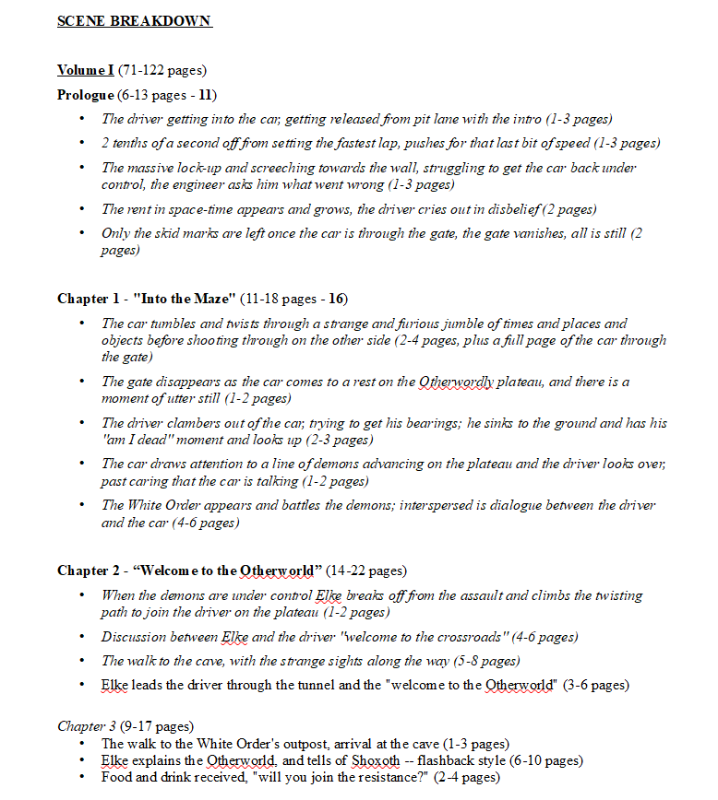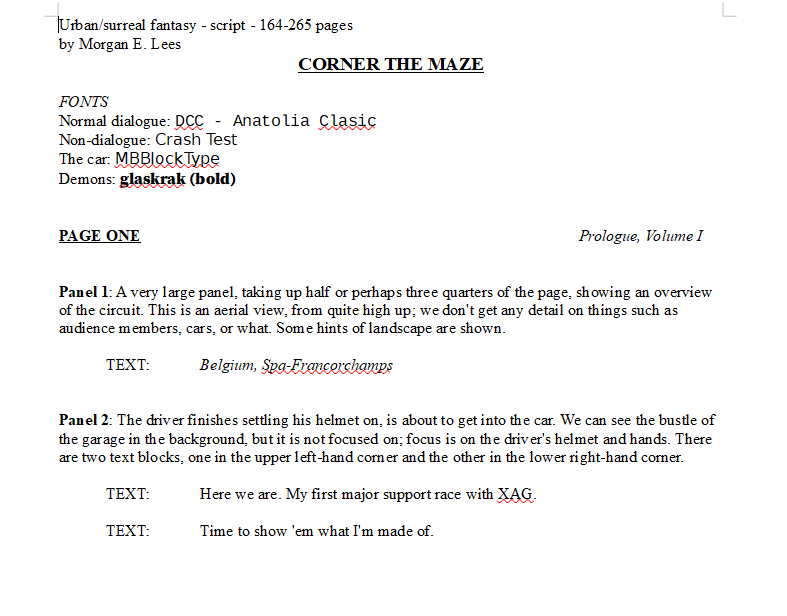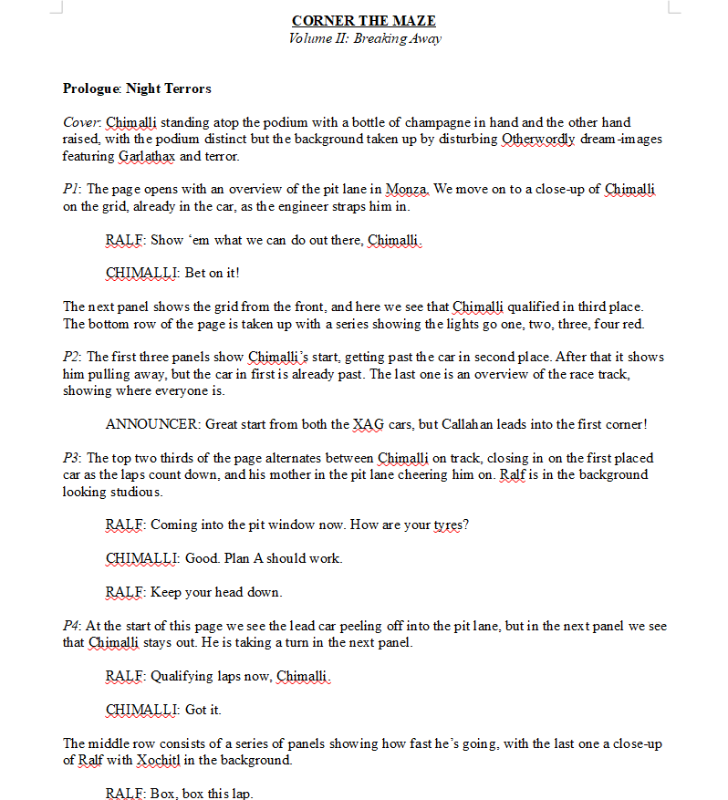Learning Comics the Hard Way, Part I: How I Stumbled Into Comic Writing
That's not even (much of) an exaggeration. Oh, I'd had various ideas bouncing around in my head for years, many of them loosely related to what would become Mortal No Longer, and in that regard this one was no exception.

That's not even (much of) an exaggeration. Oh, I'd had various ideas bouncing around in my head for years, many of them loosely related to what would become Mortal No Longer, and in that regard this one was no exception. But the others were vague, half-formed; more along the lines of "maybe somebody on a train ends up in a paralell dimension" or "this is about Snakeheart in N'g'lerat". They never went anywhere. (The last of those inspired a truly awful pencil comic that I drew three pages of when I was seventeen, then gave up.)
This one was different. Here was a character, although I didn't have a name for him yet (throughout the entire script, he remained "The Driver"), and a setting, and a primary antagonist, even though I wasn't really sure exactly who that crossed-out demon was or what the racing driver protagonist had to do with it. Most importantly, I was excited about this. I wanted to get to the point where I was writing and drawing that scene. All the details could come later! Now was the time. I was going to finally make a webcomic.
Unsurprisingly, it's not quite as easy as all that. I started by sketching out the plot, which I'd done successfully for the first draft of what would become Mortal No Longer by then, so I was confident that the process would work. I started with a one-sentence summary:
"A racecar driver is stranded in another dimension and must battle his way back home."
I also had a few highlights I knew I wanted to hit. The action had to start at a race, to show who the protagonist was and what he did, and then it quickly had to shift into the Maze -- the shifting border dimension that separates the mortal realms from the realms beyond, where demons and spirits live. At some point, I wanted that scene I had sketched out with the wall to matter, and following the precedent of everything else I'd worked on in the same universe, some manner of bargain with a demon-lord -- rejected or not -- had to take place.
I used the snowflake method to hammer out the plot, which had worked for me before (I've moved more towards a piecemeal method of my own for newer projects), and after I had my full synopsis I got stuck into the outline. Now, I was eager to get started, so I skimped a little on this step. Corner the Maze's outline looked largely like this:

It's called "Scene Breakdown", but I never got to a more formal outline stage. It consisted of a series of bullet points for each chapter, which remained unnamed until I began writing them in the script, and an estimate of how many pages each chapter would be. Each bullet point was supposed to be a scene, with the number of pages that scene would take estimated in parentheses. How descriptive these scenes were varied wildly. "The massive lock-up and screeching towards the wall, struggling to get the car back under control, the engineer asks him what went wrong" is pretty much exactly how that scene played out, but "The walk to the cave, with strange sights along the way" doesn't even tell me what the strange sights are supposed to be. I was counting on figuring that out as I went along. Which I did, but not as satisfactorily as I might have if I had plotted it all out beforehand, in retrospect. That section would create the only real (albeit minor) plothole in the comic.
(You might also notice "The White Order" referenced. That changed from this early stage; during writing I realized that name wasn't conveying what I wanted it to convey and also had some unfortunate connotations. That group would become "The Order of the Gate", which is much more accurate.)
Every time I finished writing a scene, I would slap that bullet point into italics to remind myself where I was in the script, and revise the page count if it had been inaccurate (which it usually was; I had no idea how any of this would break down in pages to begin with). But, overall, that much was similar to how I'd start writing anything else: grit my teeth and get the plot hammered out, pull an outline together, and then write. It's that last part where I really had to start learning something different.

Above is the first page of Corner the Maze. I started writing it like a theater script to begin with, but that clearly wasn't working, so I searched around to try and find the standard comic script format. You can tell that I mostly copied the format from a template somewhere. (It still has my old middle initial, but so do all of the pages of the comic.)
Notice also that "fonts" listing; I kept forgetting which font I was using for which characters while adding dialogue, so this was a handy way for me to check. It turns out that none of these were good choices for lettering a comic, by the way; more on that in the second part.
This is where I did most of my thinking. The panel descriptions are fairly thorough. They don't always use correct terminology, but that's all right, because I was also the artist. It would be more of a problem if I had a separate artist to work with.
I changed the format a lot for Volume II. Here's a look at the first page of the second volume:

Now, rather than calling out each individual panel, I call out pages ("cover", "P1", etc) and loosely describe them while adding the dialogue. This is because of a major thing that I figured out while I was working on the first volume: for me there was a lot of redundancy between my script and my thumbnails.
Thumbnails! Yes, that step between scripting and actually getting started on pencilling. I was fairly vague about the purpose of thumbnails when I started Corner the Maze, to be honest; I hardly used them at all for illustration (only when required to in class), but I knew one was supposed to thumbnail a comic. So I did. But my panel descriptions were detailed enough that I could have worked straight from them, and while I refined the dialogue through the thumbnails I didn't refine it to the point that it caused no problems when I got to putting the page together, so by Volume II I came to the conclusion that I only needed tight thumbnails and not a tight script.
This is one of the things I will definitely change next time. It would have made more sense, given that I'm faster at writing than drawing, to tighten the script and eliminate the thumbnails in favor of a base of loose pencils that I can erase.

